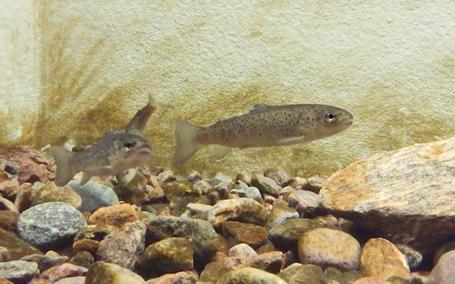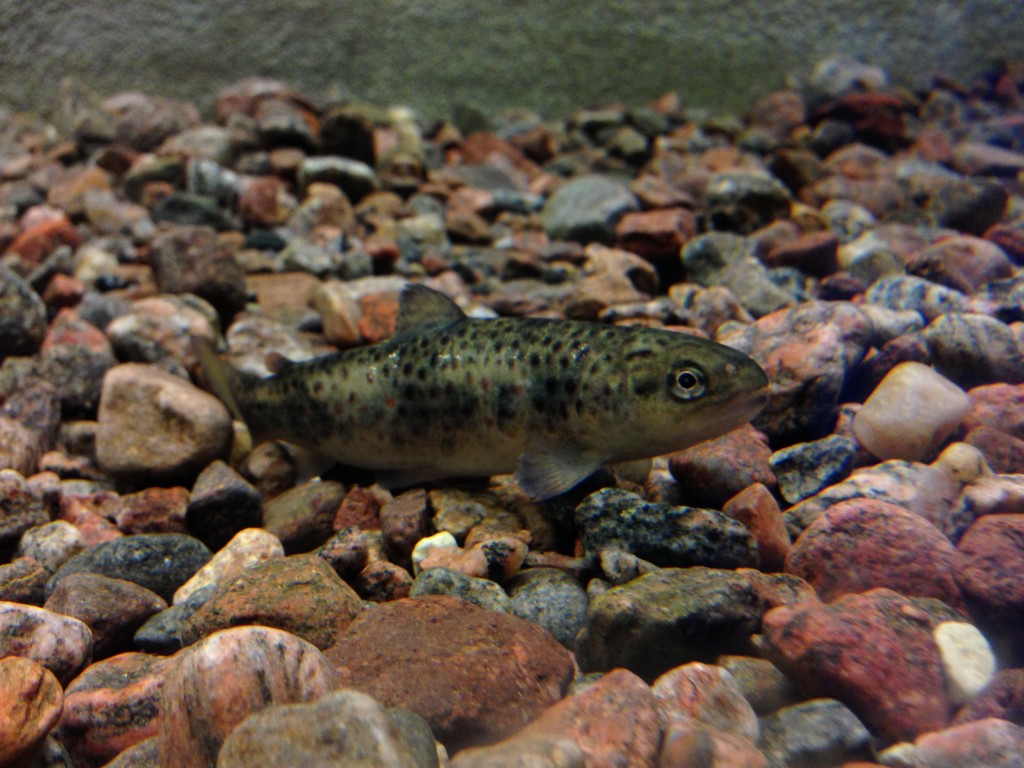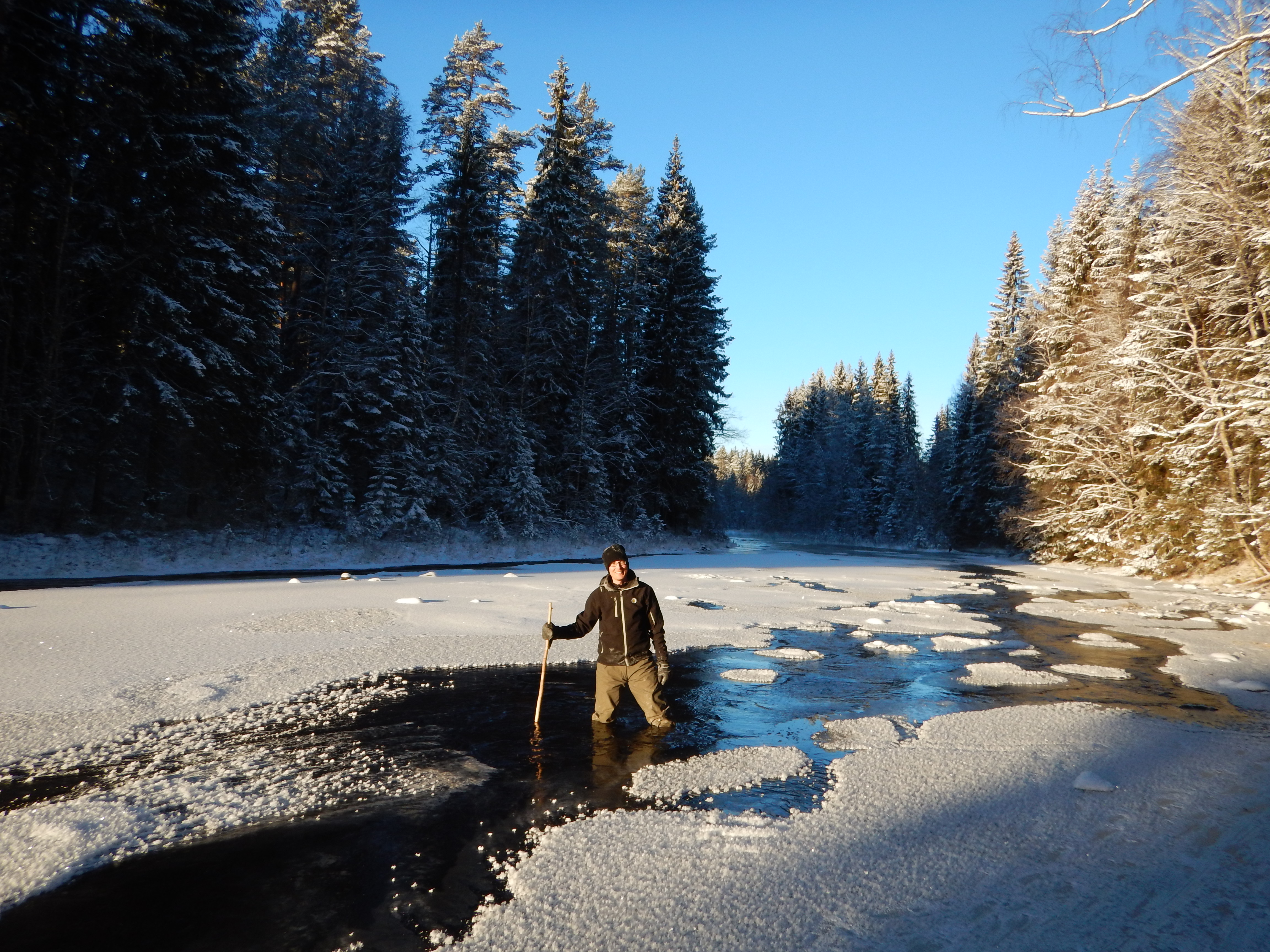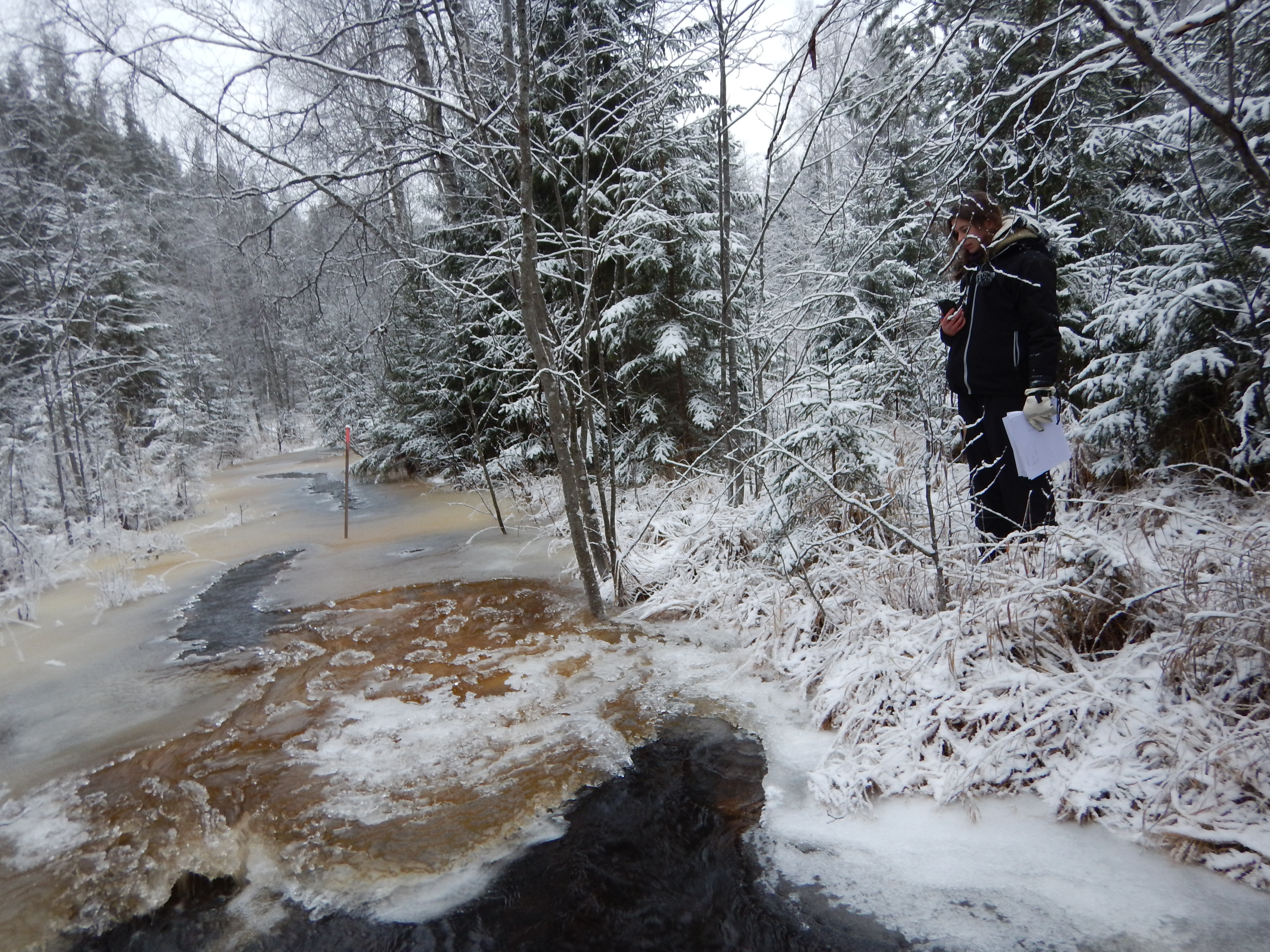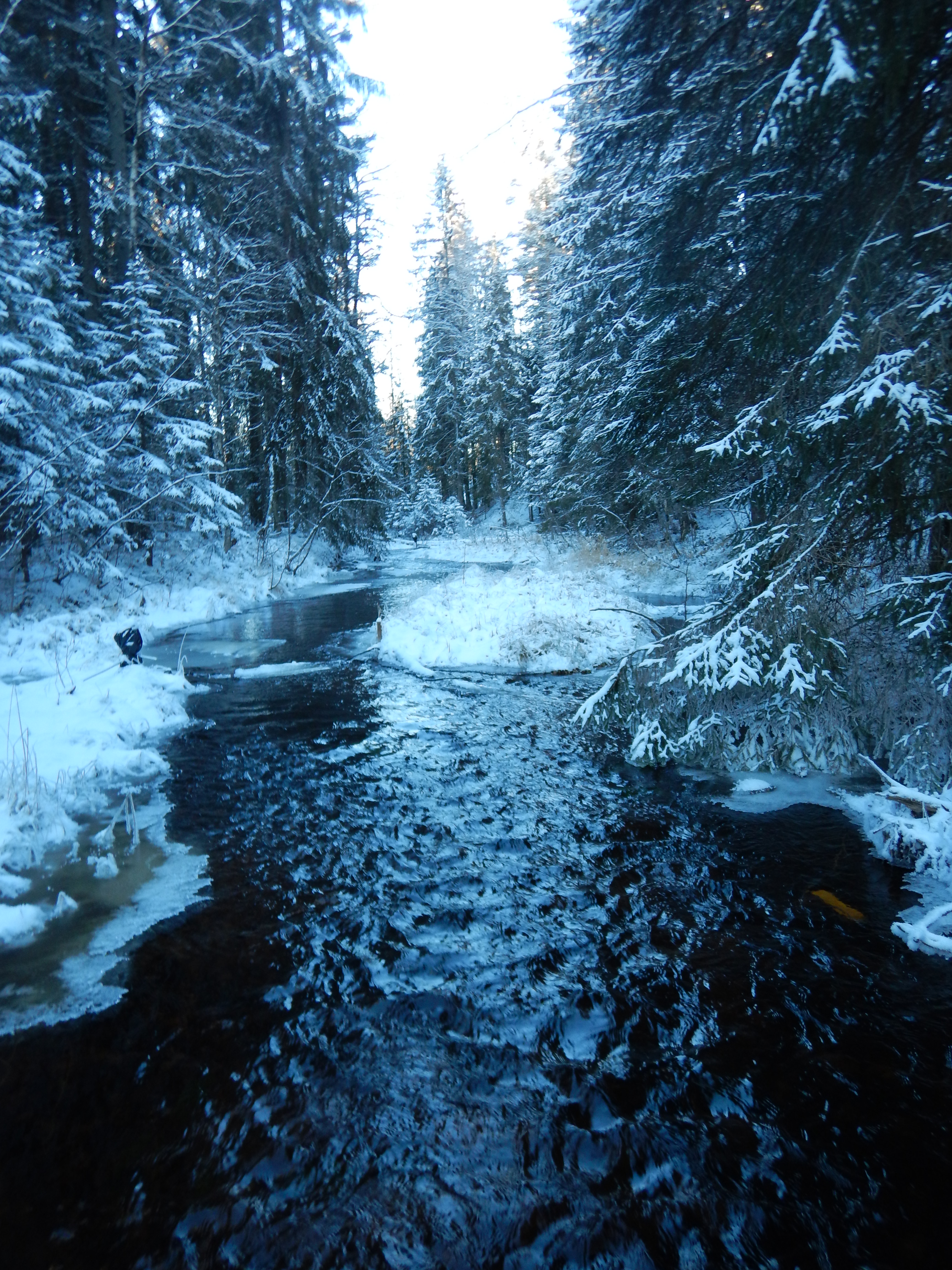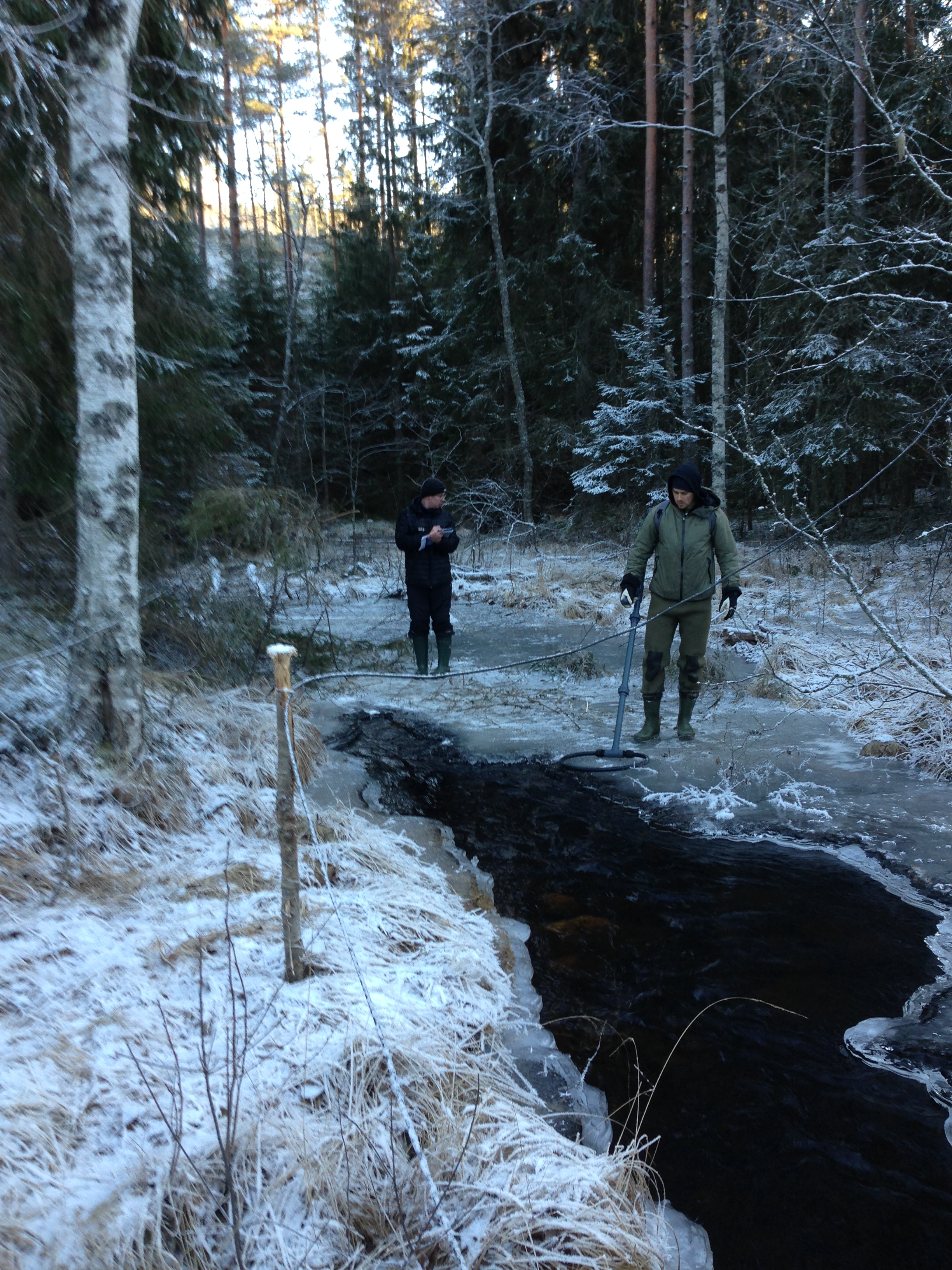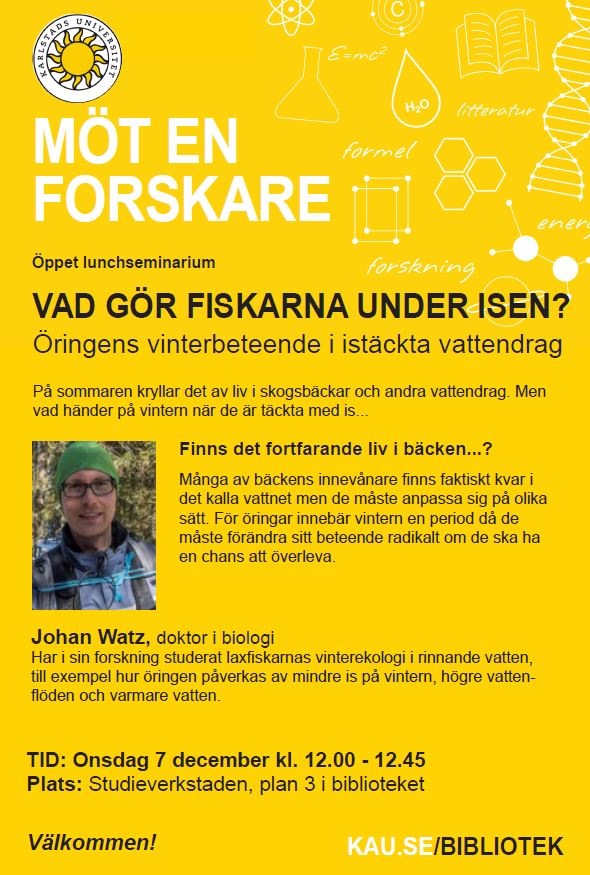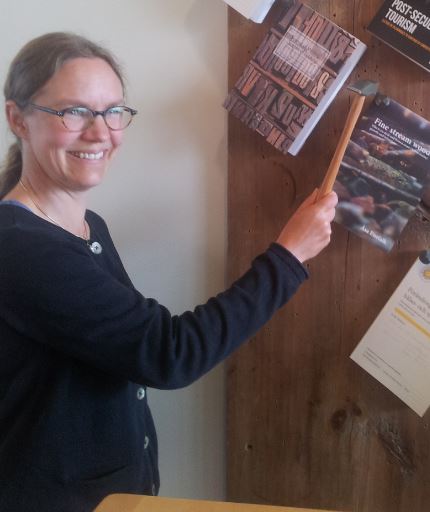Welcome to NRRV: Karl Filipsson
Posted by Daniel Nyqvist | VinterekologiKarl Filipsson has recently joined the NRRV-research group. Here he writes about his previous work and what he intends to do as a PhD-student at Karlstad University:
My name is Karl Filipsson and I recently started my PhD in the River Ecology and Management Research Group (NRRV) at Karlstad University, where I am going to study the winter ecology of stream fishes in relation to climate change. I have a master’s degree in biology from the University of Gothenburg, with focus on aquatic and evolutionary ecology. Although I have a broad interest in fish ecology and behavior, I have developed a special interest for fish inhabiting streams. In my master project I studied the effect of parasitic freshwater pearl mussel (Margaritifera margaritifera) larvae on brown trout (Salmo trutta). The project mainly examined behavioral responses in the host fish, but growth and cardiorespiratory parameters were measured as well.
In my PhD I will use an experimental approach to look at the consequences of warmer winters on predator-prey interactions and early life-history performance in stream fishes. I will use brown trout and burbot (Lota lota) as model species. River ecosystems and associated fish populations have a significant role in providing important ecosystem services. Therefore, it is of great importance to acquire knowledge on the winter ecology of stream fishes under climate change. Hopefully, results from this project will not only elucidate how stream fishes are adapted to winter conditions and respond to environmental change, but will also provide information for stakeholders and decision makers on how to manage fish populations and stream ecosystems in a future influenced by global climate change.
In addition to research, I have a great interest in scientific outreach. I have previously been working at the science center Universeum in Gothenburg and as scuba diving guide, and I am very keen on taking on the challenge to communicate research to the broader public and to be teaching in higher education.”
Some of Karls previous work on the interaction between juvenile brown trout and frehswater pearl mussel larvae is published in the scientific articles Encystment of parasitic freshwater pearl mussel (Margaritifera margaritifera) larvae coincides with increased metabolic rate and haematocrit in juvenile brown trout (Salmo trutta) and Heavy loads of parasitic freshwater pearl mussel (Margaritifera margaritifera L.) larvae impair foraging, activity and dominance performance in juvenile brown trout (Salmo trutta L.).




